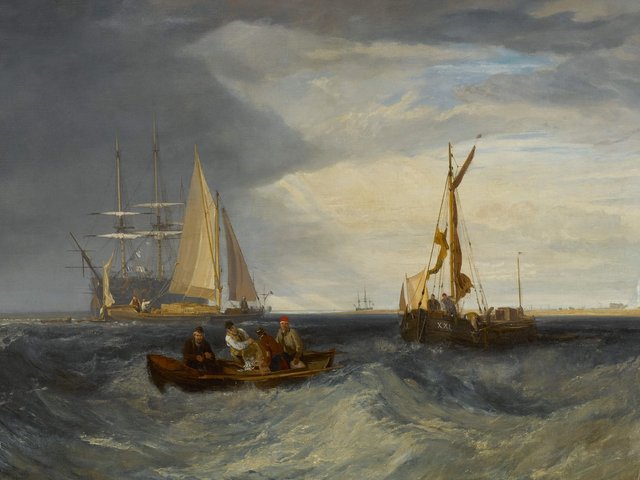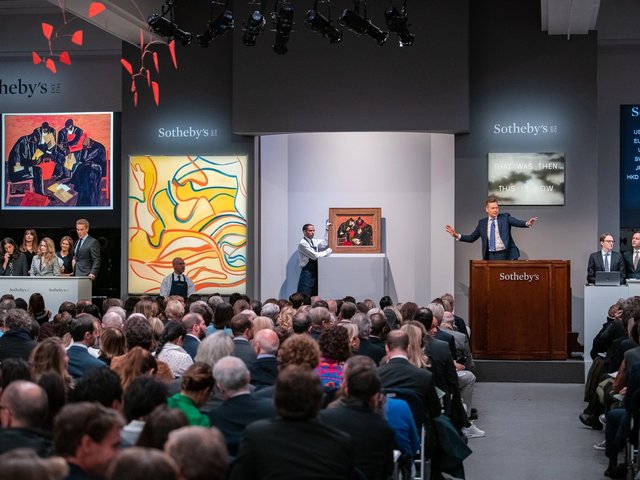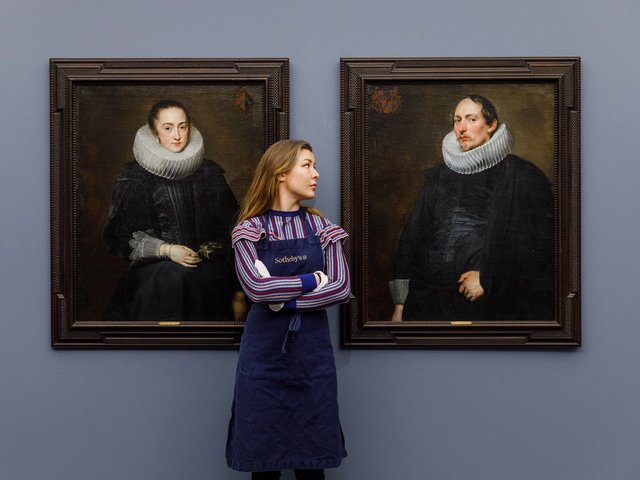Every lot offered at Sotheby’s London last night from the eclectic collection of David Bowie was sold, with almost all pieces skyrocketing far past their estimates. The auction, which set new records for 11 British artists and made a total of £24.4m, proved that the power of the late musician’s name outweighed the gloom ushered in by the election of Donald Trump just two days earlier.
Most of the art on the block was British 20th-century painting, deeply unfashionable when it was acquired by Bowie in the 1990s and arguably still unappreciated today; some pieces were derivative of movements in Europe or the US, while others were dark or strange. “Bowie was attracted to the unusual, the difficult, the spaces between,” said Kate Chertavian who worked as curator of his collection for eight years.
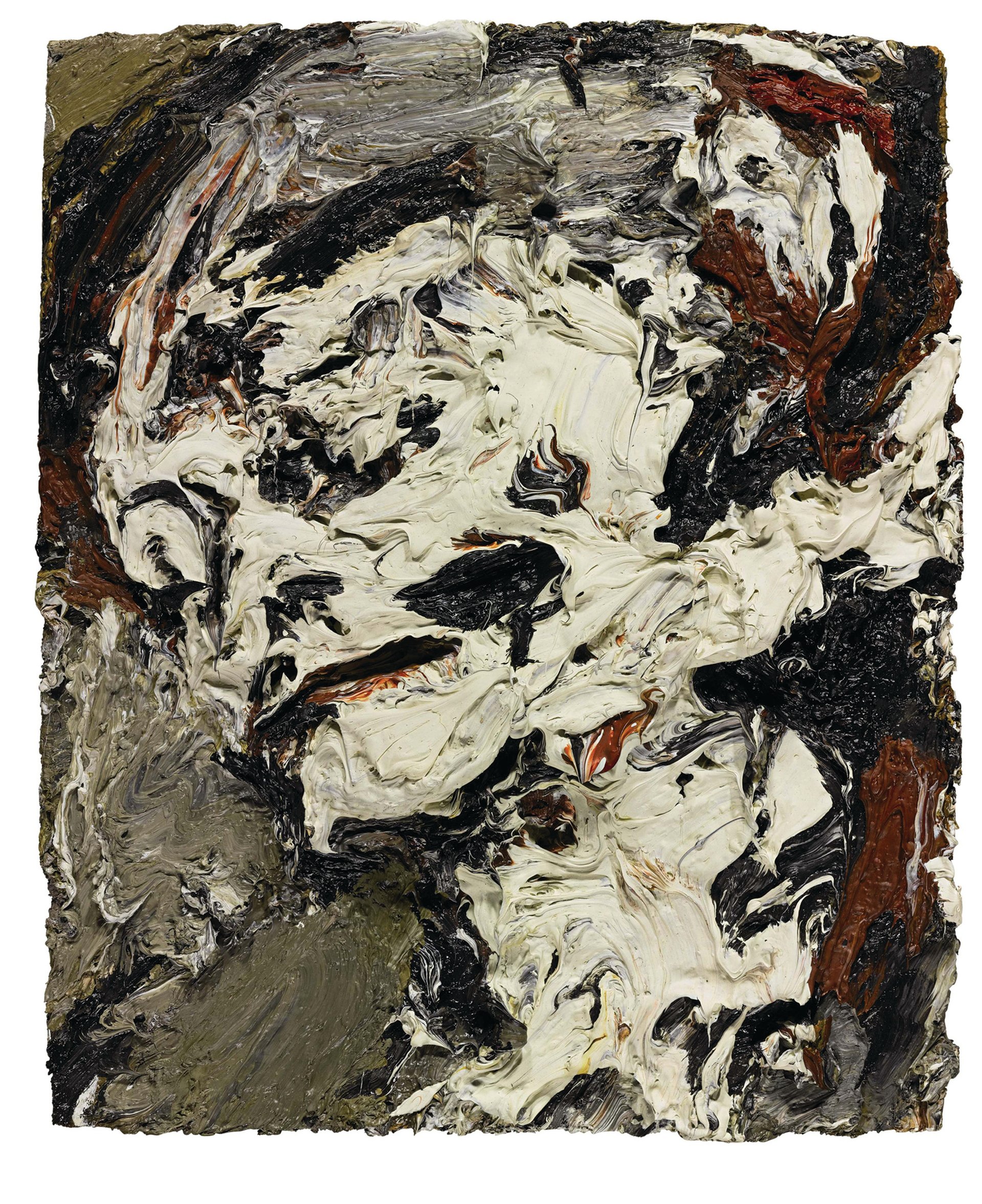
None of that mattered last night as an average of six bidders fought over every work once owned by the late, great cultural icon. The longest battle was for Frank Auerbach’s Head of Gerda Boehm, 1965, a portrait of the artist’s cousin built up in thick daubs of paint, which was included in the artist’s 2001 retrospective at the Royal Academy and which was estimated by Sotheby’s at £300,000 to £500,000.
Auerbach’s Jewish parents sent him to Britain from Berlin as a child in 1931. They would later die in concentration camps. The only member of his family Auerbach would ever see again was Gerda. His portrait of her gave “spiritual weight” to Bowie’s “angst”, the musician told a reporter for The New York Times in 1998. “I want [my music] to sound like that looks.” Sotheby’s deftly capitalised on Bowie’s attachment to the painting in all the auction’s promotional materials and it sold for £3.25m (£3.8m with fees), setting a new record for the artist.
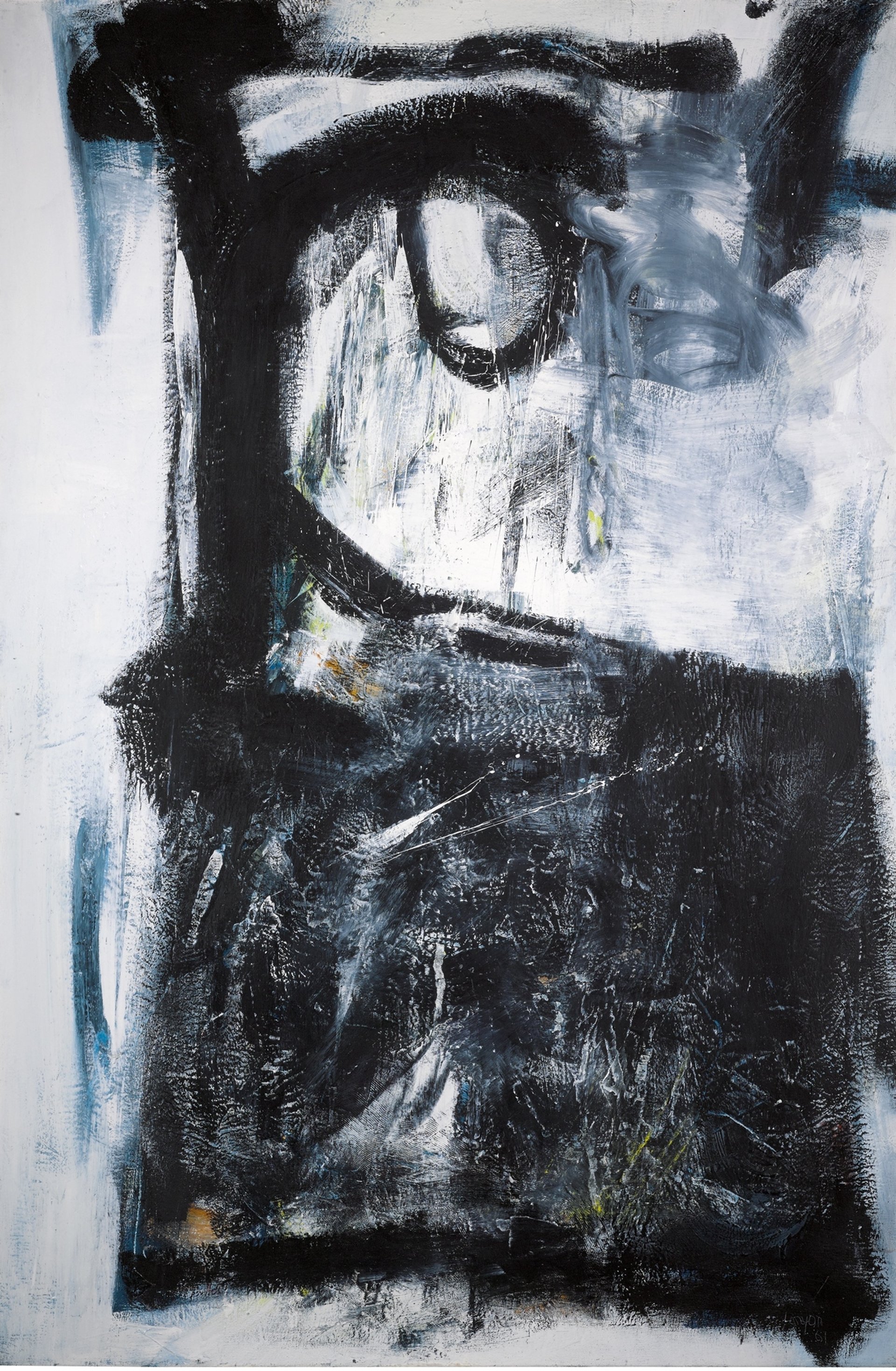
Another highlight was Witness, Peter Lanyon’s 1961 abstract composition in black, grey and white. Painted as an attempt to capture the experience of hand-gliding over the Cornish landscape, seeing patterns in the ground below while soaring through clouds, the monumental work featured on the cover of Sotheby’s catalogue and was hung during the sale behind auctioneer Oliver Barker. It went for £660,000 (£797,000 with fees) against an estimate of £250,000 to £350,000, setting another artist record.
But even less interesting pieces flew past their estimates. The David Bowie “price uplift” on the lots was at least 25%, said Peter Osborne of the London dealership Osborne Samuel. Once Sotheby’s commission is added on top of hammer prices, most works sold for around “double” their market value Osborne added, noting that “prices were so distorted that the sale doesn’t really tell us anything about the state of this market.”
Even works which seemed out of place in the predominantly British 20th-century sale did well such as an altarpiece by Tintoretto bought by Bowie from the London dealer Colnaghi. It made £155,000 (£191,000 with fees) against an estimate of £100,000 to £150,000. The new owner will lend the piece long-term to the Rubens House in Antwerp, a museum which Bowie loved, Sotheby’s announced after the auction.
Around 7,000 people watched the sale online and many of them placed bids. Addressing the screen at the back of the room which flashed online bids to the saleroom “is a bit like asking if there’s life on Mars,” Barker quipped at one point. He presided over the auction with considerable flair, frequently reminding bidders that this was their chance to own a piece of history.
The highest price of the night was the £6.2m (£7.1m with fees) paid for Jean-Michel Basquiat’s Air Power (1984) (est £2.5m-£3.5m) which sold to a collector in the room.
Two further sales of David Bowie’s collection take place at Sotheby’s today; works on offer include more British 20th-century pieces; Picasso ceramics; South African art acquired by the musician on a trip to Johannesburg for the magazine Modern Painters whose editorial board he sat on, and furniture by the Italian design group Memphis Milano led by Ettore Sottsass.


